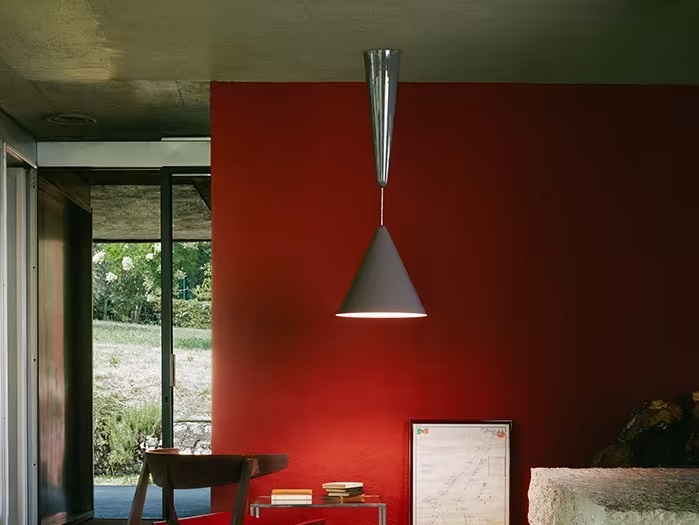The Financial Times – Six exhibits from six decades of Milan’s Salone del Mobile which illustrate how this trade fair has become the world’s premier design showcase
1960s: Componibili storage unit by Anna Castelli Ferrieri for Kartell (1967)

Given how much chic, high-end Italian furniture was exhibited at Salone in the 1960s, it might seem perverse to start with a humble storage unit. Or not. Especially when you factor in the Componibili’s omnipresence and the impact of the designer who made it so.
1970s: April chair by Gae Aulenti for Zanotta (1970)

Gaetana “Gae” Aulenti is another hugely influential woman in what was then a male-dominated industry. A Politecnico graduate, she trained as an architect and worked across industrial, furniture, interior and exhibition design, as well as graphics and in theatre. Her most famous project is probably her exuberant 1986 postmodern transformation of the Gare d’Orsay railway station in Paris into the Musée d’Orsay. It was considered provocative at the time (“fabulously eccentric” according to the New York Times), but is now widely admired. By comparison, Aulenti’s April chair is restrained. Its design is featherweight, flexible and based on the concept of a classic director’s chair, but updated with sleek tubular steel and a luxurious leather seat and back.
1980s: Carlton room divider by Ettore Sottsass for Memphis Milano (1986)

Along with over-ingenious Alessi coffee pots and boxy Ferrari sports cars, perhaps Italy’s greatest contribution to design in the 1980s was a collective called the Memphis Group. Formed in Milan at the beginning of the decade, it was led by Ettore Sottsass, the flamboyant designer renowned for his blood-red Olivetti “Valentine” typewriter.
1990s: Diabolo pendant lamp by Achille Castiglioni for Flos (1998)

Diabolo pendant lamp By the 1990s, Achille Castiglioni was the grand old man of Italian design, creator of a seemingly inexhaustible stream of objects that embodied Milanese elegenza. Many were designed with his brother Pier: the Mezzadro stool, fashioned from a plastic tractor seat (1957); the Arco floor lamp, with its marble base and graceful, swooping metal stem (1962); the Snoopy table light, a tribute to Charles M Schulz’s famous character (1967); an ingenious rotating shelf unit called Joy (1989). In all, alongside his architectural practice, Castiglioni was responsible for something like 150 products — lamps, ashtrays, cameras, telephones, car seats and more. One of the final designs Castiglioni completed, when he was in his late seventies, was the Diabolo, which debuted with the renowned Italian lighting firm Flos in 1998. The year before, he had been granted the rare honour of a solo retrospective at MoMA in New York.
2000s: Chair One by Konstantin Grcic for Magis (2003)

Italian design has cautiously become more cosmopolitan over the past 30 years, with leading brands competing to hire top-tier international talent. Soon after the new millennium arrived, Eugenio Perazza, founder of the furniture firm Magis, began hassling the Munich-based Konstantin Grcic to work with him. The result of their collaboration, which appeared at the 2003 Salone, was called Chair One. Angular in shape, stripped to the bare essentials (Perazza called it “the bones” of a chair), it struck many as functional, even aggressive, in a world that had become used to more mellifluous forms. “A lot of people hated it,” Grcic recalled.
2010s: Shimmer table by Patricia Urquiola for Glas Italia (2015)

During the past decade the design world has had its eye almost everywhere other than Italy: the US, Japan and Korea, the UK and, perhaps most of all, Scandinavia. The region’s cool-but-cosy aesthetic, reliant on natural materials, is a world away from classic Italian design.
Urquiola’s Shimmer tables show off her talents. Structurally, they could hardly be simpler, but they are fabricated from ultralight glass, finished with a high-tech iridescent coating. Each piece is slightly varied; and, refracting a rainbow of colours, seems different whichever angle you look from. Both modish and faintly mystical, they look — as the best Italian design always does — like they hail from a more sophisticated, intelligent and elegant future.


